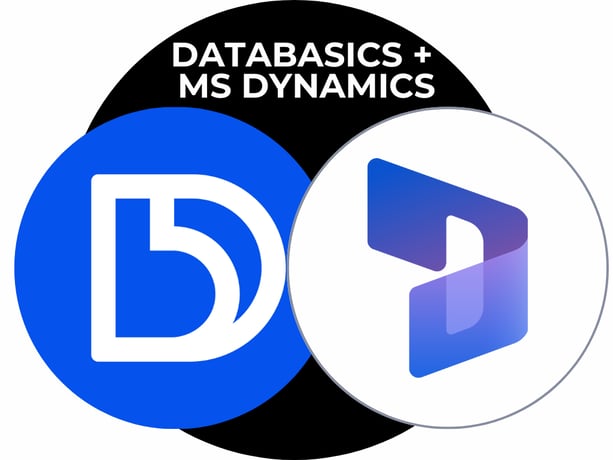
Comprehensive Guide to Managing Nonprofit Expenses
Understanding the Financial Landscape of Nonprofits
Nonprofits face unique financial challenges that differ significantly from their for-profit counterparts. With funding often coming from donations, grants, and government subsidies, nonprofits must strike a careful balance between mission impact and financial sustainability.
Unlike businesses focused on profit generation, nonprofits are mission-driven, requiring extreme transparency, accurate reporting, and strategic stewardship of every dollar. As a result, nonprofit cost management becomes both a fiduciary and ethical responsibility.
Nonprofit organizations must also manage variable income streams while maintaining continuous service delivery. That requires clear budget forecasting, rigorous expense tracking, and accountability at all levels of the organization.
Key Categories of Nonprofit Expenses
Understanding where the money goes is the first step in controlling costs. Broadly, nonprofit expenses fall into three categories:
|
Expense Category |
Description |
|
Program Services |
Direct costs related to delivering services or programs fulfilling the mission |
|
Administrative |
Overhead expenses such as salaries, office supplies, and rent |
|
Fundraising |
Costs associated with raising money, including events, marketing, and donor outreach |
According to the National Center for Charitable Statistics, program expenses account for an average of 75-85% of total nonprofit spending, underscoring the importance of managing operational and fundraising overhead with care.
Common Nonprofit Expenses to Track
Creating a clear nonprofit expenses list helps ensure transparency and informed decision-making. Common expense line items include:
- Salaries and benefits for staff
- Program materials and supplies
- Rent, utilities, and insurance
- Professional services (legal, accounting, & consultants)
- Technology and software subscriptions
- Fundraising event costs
- Travel and training
- Marketing and communications
- Grant compliance and reporting costs
Nonprofits must document these meticulously to meet audit standards and comply with IRS Form 990 reporting requirements. IRS Form 990 requires tax-exempt organizations, including nonprofits, to report detailed financial information, including expense reporting. This means nonprofits must disclose program service expenses, management and general expenses, and fundraising expenses separately. Accurate expense tracking and categorization are essential for transparency, regulatory compliance, and maintaining tax-exempt status. For more information, visit the IRS Exempt Organization Annual Filing Requirements page.
Essential Steps to Effective Expense Management
Effective management of expenses for nonprofit organizations isn’t just about budgeting, it’s about aligning expenditures with mission outcomes. Here’s a structured approach:
1. Create Program-Based Budgets
Allocate funds by program rather than by department to link spending to outcomes.
2. Implement Real-Time Expense Tracking
Use software tools to capture spending as it happens, minimizing delays and errors.
3. Conduct Monthly Variance Analysis
Compare budgeted vs. actual spending regularly to identify inefficiencies early.
4. Enforce Approval Workflows
Ensure all expenses go through the appropriate authorization channels before funds are released.
5. Perform Annual Audit Reviews
Independent audits improve accountability and build donor confidence.
For organizations seeking a robust toolset, DATABASICS Expense Reporting Software provides built-in workflows, mobile accessibility, and real-time visibility.
Innovative Strategies for Cost Reduction
To maximize mission impact, nonprofits must constantly look for ways to reduce costs without sacrificing service quality. Consider the following strategies:
- Adopt a Shared Services Model: Partner with other nonprofits for bulk purchasing or shared office space.
- Use Volunteer Support Strategically: Leverage skilled volunteers for roles such as marketing, legal, or IT support.
- Transition to Digital-First Outreach: Reduce print and mailing costs with email campaigns and social media.
- Outsource Non-Core Activities: Functions like payroll or IT can often be outsourced more cost-effectively.
- Review Subscription and Software Licenses: Audit all tech tools to eliminate redundant or unused services.
Related Reading:
Navigating Tax Obligations and Maximizing Deductions
While nonprofits are generally exempt from federal income tax under Section 501(c)(3), that doesn’t mean they’re off the hook financially. Some key compliance and tax considerations include:
- Unrelated Business Income Tax (UBIT): Income from activities not substantially related to the mission may be taxable.
- Payroll Taxes: FICA, Medicare, and unemployment taxes are still applicable.
- Sales and Property Tax Exemptions: Vary by state and require proper documentation.
- Deductible Expenses: Recordkeeping is crucial to claim operational costs that reduce UBIT.
Many organizations miss out on legitimate deductions due to poor documentation or lack of awareness. A strong expense management system ensures opportunities aren’t lost and audit risks are minimized.
The Role of Technology in Expense Tracking
Relying on spreadsheets and manual forms introduces room for human error, lost receipts, and compliance breakdowns. Today’s nonprofits need streamlined, mobile-ready tools that simplify every step of the expense lifecycle.
Key Features to Look For:
|
Feature |
Benefit |
|
Mobile Receipt Capture |
Submit expenses on the go, reducing lost documentation |
|
Automated Policy Checks |
Catch non-compliant spending instantly |
|
Grant-Based Allocation |
Track expenses against specific grants or funding sources |
|
Integration with Accounting |
Sync directly with platforms like QuickBooks or Sage |
|
Cloud-Based Reporting |
Provide real-time visibility for leadership and board members |
Tools like DATABASICS Expense Reporting Software empower teams to manage and report on expenses efficiently, supporting audits, grant compliance, and transparency.
Engaging Stakeholders in Financial Planning
Nonprofits thrive when staff, leadership, and the board are aligned financially. Here’s how to bring everyone to the table:
- Involve Program Managers in the budgeting process so they understand their cost impact.
- Educate Staff on budget constraints and expense policies to encourage responsible spending.
- Share Financial Dashboards with the board for transparency and accountability.
- Host Quarterly Financial Reviews to keep stakeholders informed and involved.
These habits promote buy-in and a culture of financial stewardship across the organization.
Addressing Compliance and Risk Management
Compliance is a major concern for nonprofits, especially those receiving federal grants or handling sensitive data. Common risk areas include:
- Grant Misuse: Misallocating funds outside approved scope
- Non-compliance with Donor Restrictions: Spending designated donations incorrectly
- Data Privacy: Especially with donor and beneficiary information
- Fraud and Misreporting: Often due to lack of internal controls
Key Risk Management Actions:
- Establish clear segregation of duties for spending authority.
- Regularly review internal controls and approval processes.
- Conduct fraud awareness training.
- Use audit trails and digital records to track financial activity.
A centralized expense platform ensures transparency and traceability to mitigate these risks. Accurate expense tracking is essential for nonprofit transparency, compliance, and financial management. Key risks include grant misuse, non-compliance with donor restrictions, data privacy issues, and fraud. To mitigate these, nonprofits should establish clear segregation of duties, review internal controls, and use audit trails. A centralized expense platform ensures transparency and traceability, supporting accurate financial reporting and reducing risk.
Enhancing Financial Literacy within Nonprofits
A common barrier to effective cost control in nonprofits is a lack of financial literacy among staff and volunteers. To bridge this gap:
- Provide training sessions on reading budgets and interpreting financial statements.
- Create easy-to-read dashboards and visualizations for non-financial staff.
- Offer role-specific financial guides to teach what’s relevant to each team member.
Empowering your team with financial knowledge improves accuracy, promotes ownership, and ensures compliance.
More insights:
Conclusion
Managing expenses for nonprofit organizations is about more than staying within budget; it’s about aligning every dollar with mission delivery and long-term sustainability. With proper planning, modern technology, and a culture of transparency, nonprofits can confidently manage resources and scale their impact.
By implementing real-time tracking, engaging stakeholders, and embracing smart cost-reduction strategies, your organization can move beyond reactive budgeting to proactive, mission-aligned spending.
Want to streamline your expense tracking and grant accountability? Explore DATABASICS Expense Reporting Software and discover how purpose-built tools can transform your approach to financial management.
Subscribe to our blog
Recent Posts
Posts by Topics
- Expense Management Software (123)
- DATABASICS (66)
- Time Tracking Software (45)
- Leave Management System (26)
- P-Cards (9)
- Home Healthcare (8)
- Government Contractors (7)
- Nonprofit Organizations (7)
- International Development (6)
- Receipt Management (6)
- Advanced OCR (2)
- CROs (2)
- Staffing Agencies (2)
- Vendor Invoice Management (2)
- Audit Management Software (1)
- Construction (1)
- Field Service Management (1)
- Integration (1)
- Microsoft Dynamics (1)
- Oracle NetSuite (1)
- Partnerships (1)
- Professional Services (1)
Read on

Why DATABASICS Time & Expense Is Becoming the Central Hub for Enterprise ERP,...
Read Now
The State of Expense Management: Innovation, Expectation, and Balance at a...
Read Now
2026 Mileage Rates: Updates, Delays & Compliance Tips
Read Now
Expense Management Freedom: Why Flexibility Outlasts Restrictive Systems
Read Now
What Customer Reviews Say About DATABASICS: 2024-2025 Metrics
Read Now
Dynamics Integration: See DATABASICS at Dynamics Summit 2025 to Make Dynamics...
Read Now
Subscribe to Our Blog
Subscribe to our blog and get the latest in time tracking and expense reporting news and updates.


